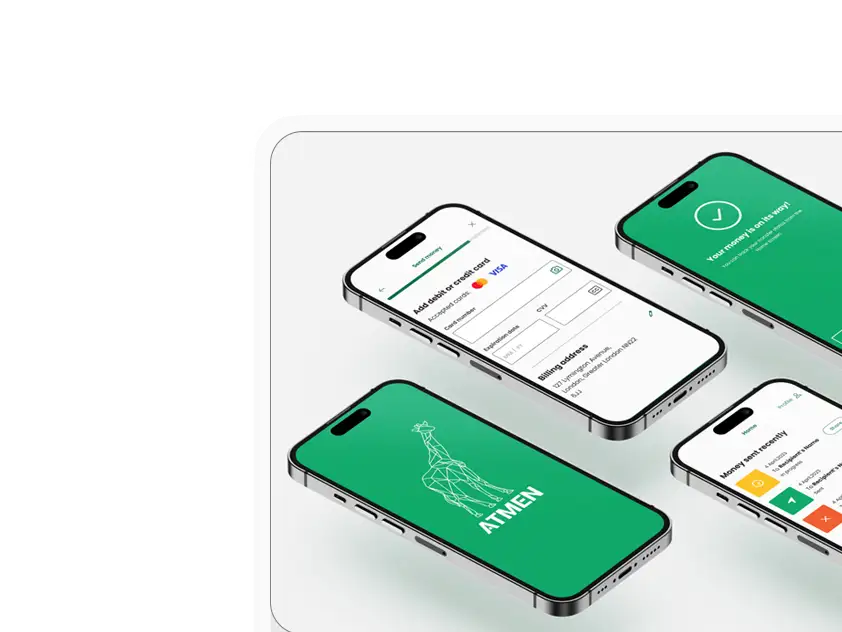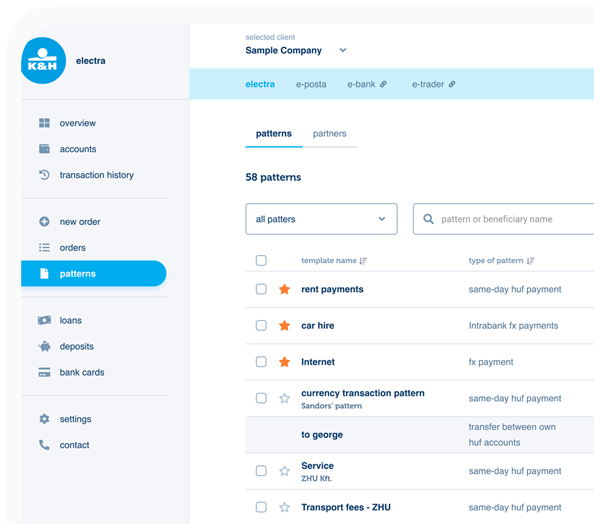How Customer Journey Mapping Fixes Poor Experiences and Accelerates Digital Transformation
In today's highly competitive digital environment, where choosing another product or service is literally just a click away, it's crucial for brands to be able to serve increasingly demanding, well-informed customers whose preferences are changing faster than ever. Customer Journey Mapping can play a key role in this. Beyond improving the customer experience and UX design, it can also provide solutions to issues hindering digital transformation and business transformation, such as isolated processes within the company, fragmented data (thus, difficulties in data-driven decision-making), and low willingness to switch to digital services.
What is a Customer Journey Map?
A Customer Journey Map (CJM) is essentially a visual representation of the process a customer goes through in relation to a company or service – starting from, for example, encountering the brand on social media, through purchasing, signing a contract, subscribing, to how they use it, and even what they do later, such as recommending it to others. Therefore, it's a framework, a story, that provides a complete picture of the customer's experience at every step of the interaction. It helps you to see customer needs and pain points, where they might drop off, and even anticipate their potential reactions, allowing us to provide relevant solutions and answers in advance.
 Visual depiction of a customer's journey in an app, created with MidJourney
Visual depiction of a customer's journey in an app, created with MidJourneyUsually, several such maps are needed, based on specific customer types, or personas, highlighting and understanding their perspectives, their interactions at each stage of the journey, the challenges they face, the emotions they experience (sentiment analysis), and, of course, the customer touchpoints and communication channels they use. It typically takes into account non-linear activities as well, meaning what they do beyond the concrete interaction with the product or service, such as onboarding, customer loyalty, and recommending it to others. In this sense, the CJM is a broader category than the User Journey Map, although it's true that the terms often overlap and are used interchangeably. The literature may refer to this work as a User Journey Map or User Story Map, or even as a Customer Experience Map or Consumer Journey Map, depending on the industry.
The map generally consists of the following:
- Touchpoints (e.g., website, app, phone call, purchase).
- Specific actions performed.
- Channels used for communication beyond owned platforms (e.g., social media, chat, emails).
- The customer's feelings and thoughts at each stage of the interaction (e.g., satisfaction or frustration).
- Points where the customer encounters difficulties or where the company could improve its service, leading to process improvement.
It's important to distinguish the CJM from the marketing funnel because although both show the customer's path, their focus is different. The marketing funnel represents the business's perspective, focusing on how to guide potential customers toward conversion, and simplifies the path into linear stages, such as awareness, consideration, and purchase. The CJM is created from the customer's point of view and takes into account non-linear behavior, such as post-purchase activities.
Of course, today you don't necessarily need to draw the customer journey on a whiteboard with Post-it notes; numerous tools are available, such as Miro, UXPressia, Lucidchart, and Smaply, and AI is naturally providing increasing assistance in all of this.
How Does Customer Journey Mapping Help Improve the Digital Experience and Strategic UX?
The CJM depicts the customer's entire relationship with the company or brand from their perspective, which helps to understand where they encounter difficulties, become frustrated, or give up on the whole process. It can be a crucial tool in identifying and eliminating these pain points. It helps you empathize with the customer's situation, what they feel, what they think, and what they do at each step. It also helps to prioritize problems, for example, what causes the most frustration or what most hinders conversion and assists in allocating resources in a development or redesign project.
The map shows bottlenecks, i.e., where customers get stuck. A classic example of this is cart abandonment: if many people don't complete the process, it's clear that something is wrong there. The visualization can also point out components or steps that are unnecessary and only complicate the customer's journey.
 Crossing the bottleneck, created with MidJourney
Crossing the bottleneck, created with MidJourneyThe CJM also helps with personalization by showing what each customer segment or persona does at what time, what their expectations are, what difficulties they encounter, and even what emotional reactions they experience at each point. All of this, of course, can be greatly supported by AI-based hyper-personalization, one of the flagships of the 2025 digital trends.
The CJM is not a static document, but rather a snapshot: it should be continuously updated after implementing a change to see how it affected the process, thus greatly aiding iterative development and process improvement.
How Does a Poor Customer Experience Hinder Digital Transformation?
Poor customer experience (CX) is not just a customer service problem; indirectly, it can be a fundamental obstacle to successful digital transformation and business transformation.
Perhaps the most obvious example is that if customers have negative experiences with current digital interfaces, they are less likely to try and use new digital services. (If our experience is that a company's website is a constant source of frustration, we will approach the mobile app with suspicion at least.) Frustrated customers are, of course, more likely to leave the brand and switch to competitors who perform better in this area. Moreover, if they share their negative experiences, this can create a vicious cycle, scaring away potential new customers.
Poor CX can also lead to customers abandoning processes prematurely, providing incorrect or insufficient data due, for example, to a confusing form, or even partially or completely avoiding digital channels. All of this can undermine data-driven decision-making, which is an important tool and goal of digital transformation. Since digital transformation also relies heavily on iterative development based on user feedback, the lack of data makes this more difficult, and personalization also becomes harder or even impossible.
A poor digital experience also leads to financial losses if resources have to be devoted to support and customer service instead of development; if poor CX requires focusing on repairs, redesign, and problem-solving; or if poorly designed internal digital tools reduce employee productivity. Not to mention that poor CX simply portrays an image of an outdated company that is not keeping up with the modern world, which can have a direct impact on customer acquisition and retention (and even on attracting and retaining employees).
Speaking of financial losses, Zendesk’s data shows that 73% of customers switch to a competitor after multiple bad experiences, and Coveo's research found that 56% of people don't even complain to the company, but rather switch silently. CX expert Shep Hyken's research shows even more shocking data: 79% of customers may switch to a competitor for a better CX, and for 51% of them, this is even more important than price.
How to Use the Customer Journey Map in Practice
The first step of the process is mapping the current state: setting aside preconceived notions of what the customer journey should look like and examining what it's like in reality. Identifying pain points is perhaps the most important. Where are there friction points? What causes difficulty? What causes frustration? Where might users drop off? Can't find information on the website and call instead? Is registration or onboarding too complicated, and they give up? Is there no payment option they would use?
The CJM clearly shows these phases. Here, UX research and interviews can be very important, as can the experiences of customer service staff. UX professionals need to go through the customer journey themselves, with trial purchases, testing the website or app, and even calling customer service. Involving different departments of the company (marketing, sales, IT, customer service, etc.) is also essential.
 Inspecting the CJM from the inside, created with MidJourney
Inspecting the CJM from the inside, created with MidJourneyAfter creating the map, the core work begins: improving the identified points, optimizing processes, creating a personalized experience, and integrating potentially separate operating systems. Since the CJM is not a one-time project, but a living document, i.e., part of continuous, iterative development, changes must be monitored, their impact measured, and processes refined based on feedback, in which technology, i.e., AI-based analysis and heatmapping, also plays a major role.
Customer Journey Mapping and Digital Transformation
The use of a CJM not only contributes to a better CX, but also plays a crucial role in digital transformation itself. Let's look at some areas where this is very clearly seen:
1. Isolated Digital Processes (Silos)
In companies with older, more rigid organizational structures, it's common for individual departments to work more or less independently and isolated from each other. This has its disadvantages: lack of data sharing, redundancy, and even conflicting goals. Of course, this problem can (and should) be addressed directly, but a CJM can also highlight these problems, for example, if customers using different products of the same brand have completely different experiences. If business and organizational processes are assigned to individual stages of the customer journey, it becomes much more transparent where there are deficiencies, redundancies, or even conflicting goals. By mapping the customer journey, each department better understands how its own area affects the overall CX, which encourages collaboration.
2. The Problem of Fragmented Data
The fact that data is generated in different places within an organization can lead to many problems, from inconsistent communication, inaccurate personalization, or companies missing out on marketing or cross-selling and upselling opportunities, to the point where accurate business analysis is also made more difficult. In the case of banks and financial organizations, this can be exacerbated by problems such as difficulty complying with various regulations or significantly hindering risk management. In security and data protection, it is more difficult to maintain adequate security in multiple separate systems and to comply with data protection regulations such as GDPR.
Although the CJM does not directly solve these problems, it effectively highlights where they might be. When creating the map, situations that point to these data silos easily emerge, for example, if someone applies for a loan online, but at the personal meeting, it turns out that the salesperson does not have certain information, or if they receive offers for products they already have (or have previously rejected). These are all consequences of fragmented data, and the CJM makes this concrete, not just an abstract IT issue.
3. Slow Adoption of New Digital Tools
The successful introduction of new digital tools is perhaps the area where the benefits of the CJM are most obvious. For example, it helps to show the customers' concrete problems that need to be or can be addressed with digital tools; it helps to prioritize these needs; and it points out not only if there is a need for such a tool, but also what functions it should have. For example, if the map shows that customers have a problem with the difficulty of retrieving their invoice history, then a new app must prioritize this function.
The CJM can also help to integrate the new tools into existing processes, and how they should connect to already existing channels (e.g., which functions of a more complex desktop or web application must be transferred to the mobile app so that users can use it on the go). And if necessary, the CJM can even point out where and how a new application needs to connect to back-end systems, and where additional development may be needed.
4. Difficulty Measuring the Financial Impact of Digital Developments
It's natural that financial decision-makers want to see exactly how developments will pay off, i.e., what the return on investment (ROI) is. The CJM can help translate the often abstractly defined goals of digital transformation (such as increased efficiency or modernized systems) into tangible, measurable results. These include Customer Satisfaction (CSAT); Net Promoter Score (NPS), which measures loyalty and willingness to recommend; and Churn Rate, which measures the percentage of customers who drop off.
Numbers such as how easy it is for customers to interact with a bank (Customer Effort Score, CES), what percentage of customers ultimately open an account or choose a financial product, or what proportion switch from more expensive personal service to cheaper digital channels can also be directly translated into financial results. A well-structured and regularly maintained CJM makes it much easier to extract these and similar key performance indicators (KPIs), as well as to communicate and justify the effectiveness of the money spent on digital transformation to various stakeholders.
In summary, Customer Journey Mapping is not only about making the experience as good as possible for users, but it also plays an important role in the area of digital transformation. It helps prioritize developments, break down silos, successfully introduce new digital products, and, particularly importantly, make the return on these investments measurable and justifiable. But let's not forget that this map is not something that is done once; it requires continuous updating and actualization to truly and support our goals in real-time.
Ergomania can help you in creating your first CJM! Drop us a line and find the best solutions for you.









